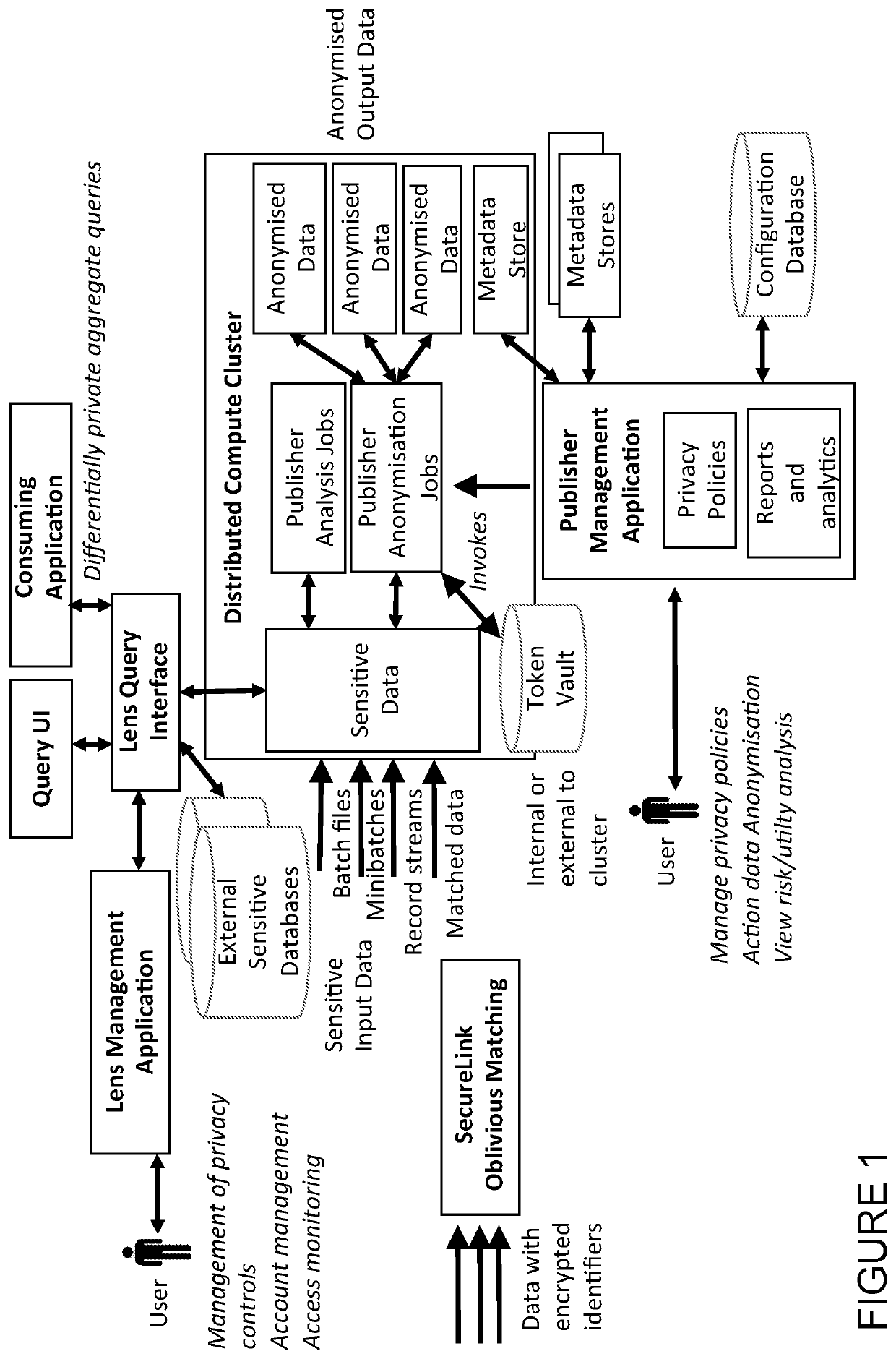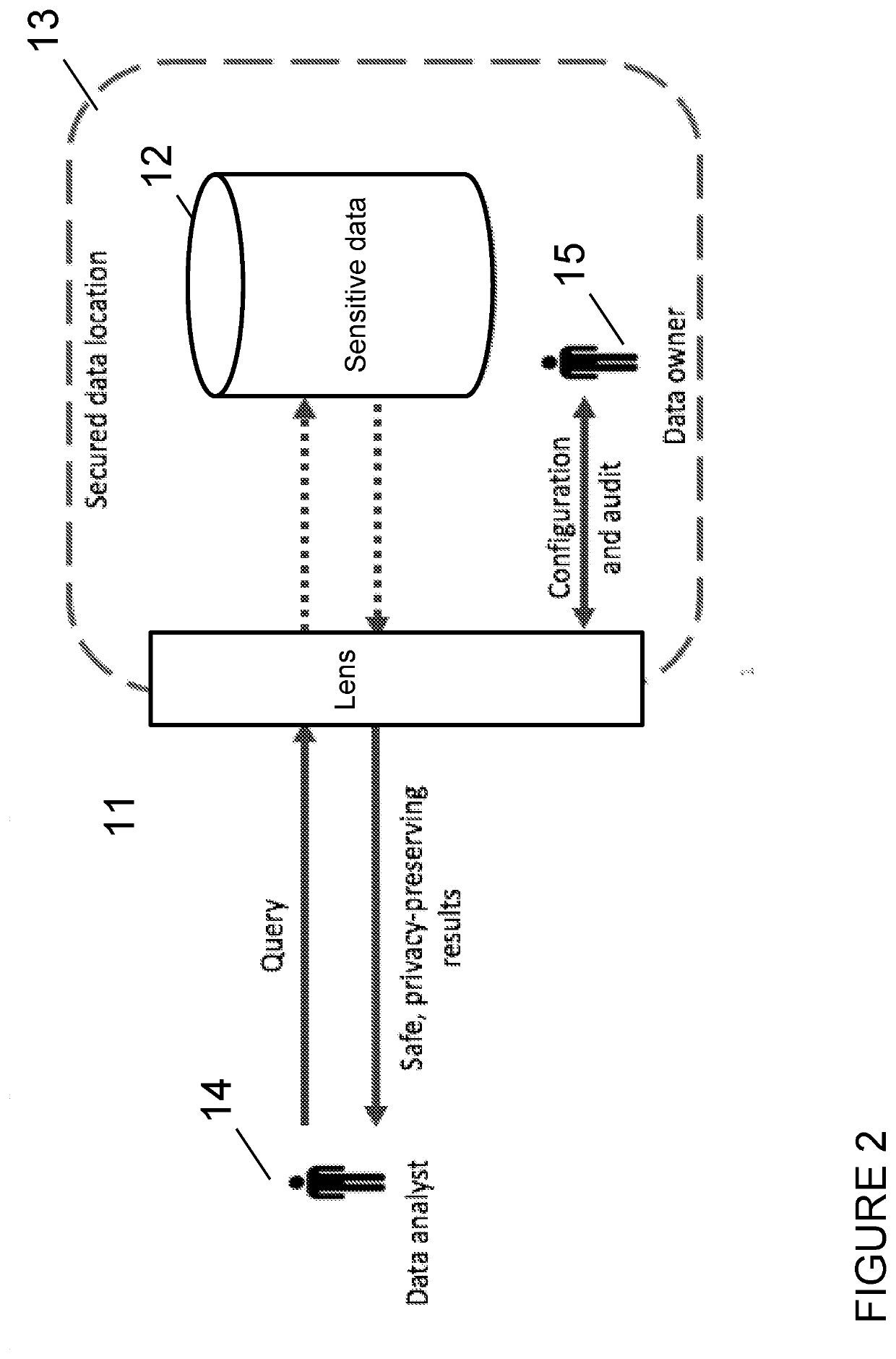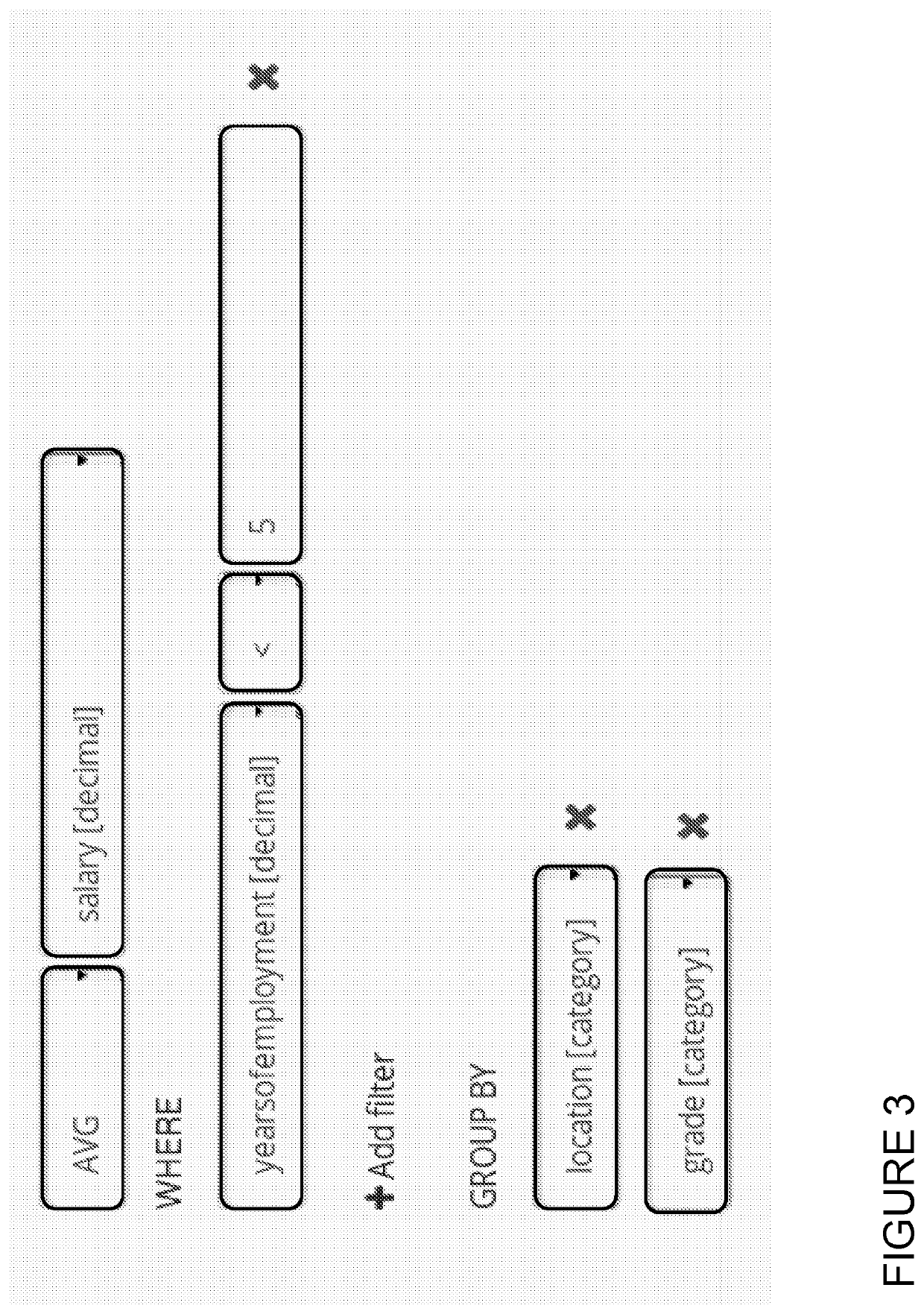Computer-implemented privacy engineering system and method
a privacy engineering and computer technology, applied in the field of computer-implemented privacy engineering system and method, can solve the problems of insufficient privacy protection, all approaches relying on security technologies, and insufficient privacy protection in the industry, so as to reduce or prevent the risk of identification or disclosure of sensitive information, and protect against the risk of reidentification
- Summary
- Abstract
- Description
- Claims
- Application Information
AI Technical Summary
Benefits of technology
Problems solved by technology
Method used
Image
Examples
Embodiment Construction
[0068]We will now describe an implementation of the invention in the following sections:
Section A: Overview of some key components in the system
Section B: Lens
Section C: SecureLink
Section D: Publisher
[0069]Note that each innovation listed above, and the related, optional implementation features for each innovation, can be combined with any other innovation and related optional implementation.
[0070]In this document, we shall use the term ‘node’ in the following different contexts:[0071](1) A node in a computing cluster. In this instance a node means a single computer that is a member of a computing cluster.[0072](2) A node in a graph structure, which may have edges connecting it to other nodes. We use the term node in this sense when discussing tree structures. The terms root node, leaf node, child node, and parent node relate to this context.
[0073]We also shall use the term ‘cluster’ in the following different contexts:[0074](1) A computing cluster. A computing cluster is a set of c...
PUM
 Login to View More
Login to View More Abstract
Description
Claims
Application Information
 Login to View More
Login to View More - R&D
- Intellectual Property
- Life Sciences
- Materials
- Tech Scout
- Unparalleled Data Quality
- Higher Quality Content
- 60% Fewer Hallucinations
Browse by: Latest US Patents, China's latest patents, Technical Efficacy Thesaurus, Application Domain, Technology Topic, Popular Technical Reports.
© 2025 PatSnap. All rights reserved.Legal|Privacy policy|Modern Slavery Act Transparency Statement|Sitemap|About US| Contact US: help@patsnap.com



